What does ferret proofing mean?
Do you really have to ferret proof room your ferret lives in?
These are only a few questions I will answer about ferret proofing your home. In this post, you will see what it means to ferret proof your home, what you can do, what rooms have to be ferret proofed, and how you can easily do it. With ferret proofing, you are making your home safe for your ferret to roam around.
TABLE OF CONTENTS
What Is Ferret Proofing And How Do You Do It?
Ferret proofing is a process that affects every corner of your home. It is a group of tasks you have to do to make your home safe for a ferret as a pet.

Ferrets are small, flexible, and extremely curious living beings. They love exploring, crawling into tight places and they aren’t aware of the danger around them. If you don’t make your home safe for ferrets, accidents will happen.
When you are ferret-proofing your home, you will have to think about every room you have, from the kitchen, living room to the bedroom and bathroom.
Why Should You Ferret Proof?
As I have already mentioned, ferrets are mischievous and their middle name is trouble. Ferrets love exploring and they will do everything in their power to climb on that chair, go under that couch or break in that drawer. They aren’t aware that something might go wrong.
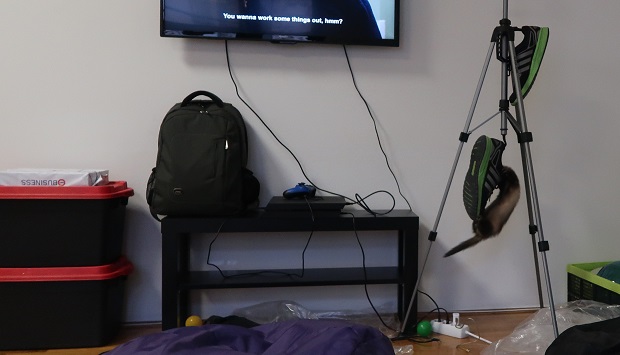
Ferrets don’t know about chemicals in your cabinet, sponge in the couch, etc. You know they aren’t aware that those things are harmful to them and that their little adventure can be fatal.
By ferret proofing, you are preventing many accidents from happening. You can prevent simple accidents like digging in a house plant, to something much more serious like ferret blockage to poisoning, crushing, or simply falling from a too-high shelf.
Good For Humans Too
When you ferret proof your home, you can relax knowing your ferret is safe. That means you don’t have to keep an eye on him at all times, but you should definitely check him every now and then. This process will give you peace of mind and you will be able to focus on other things in your home.
When Should You Start Ferret Proofing?
The ideal situation is if you can start ferret proofing before you get a ferret. That way, when you are done, you can simply put the ferret on the floor and watch how he turns everything into an adventure.
If that is not possible, make sure you ferret proof at least one room so you can put the ferret in it before you continue with the work on other rooms in your home.
What Should You Ferret Proof?
If you let your ferret in your entire home, then you should ferret proof every room. Basically, every room your ferret has access should be ferret-proofed.
So, what can you do to ferret proof each room? You can start by organizing the work. What should you do first, how can you do it and what are the options for it. You have to think about the furniture, the windows, doors, even things you have stored in the cabinets and drawers.
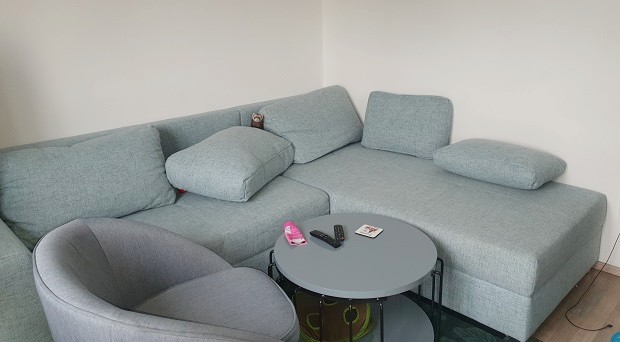
Will You Allow Ferret To Enter There?
If you have a few rooms you don’t allow your ferret to enter, make sure he can’t enter them. Those rooms can be bathrooms, toilets, kitchen or basic bedroom. It doesn’t matter the purpose of the room or the reason you don’t want your ferret to enter. What matters is that you prevent your ferret from entering.
Decide Which Rooms Are Ferret Rooms
Now that you removed the forbidden rooms from the equation, focus only on the rooms your ferret has access to. Go to each one of the rooms and think about what you can or you have to do.
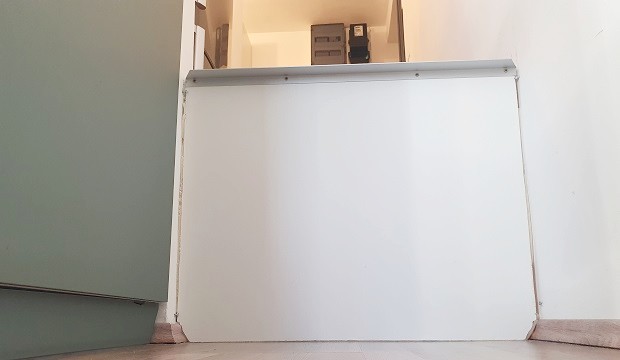
Look Around The Room
The first thing you should do when ferret proofing your home is to sit at the entrance of the room and look around. What are possible dangerous spots in the room? Do you have high shelves, drawers with sharp objects or chemicals, reclining furniture? If you do, then those are things you have to focus on.
Move The Furniture
The next thing you can do is to rearrange the furniture so a ferret can’t jump from one ferret-safe furniture to the other, not so ferret-safe furniture. For example, move the chair away from the TV stand so your ferret can’t jump from the chair to the TV stand.

Start Ferret Proofing
The last step is to go and do the work. So, let’s focus on that part and see what you can do to keep your ferret away from accidents in your home.
How To Ferret Proof Furniture?
The first thing on our list is ferret-proofing furniture because it takes the most space in our homes. I will focus on the most dangerous furniture first – sofas and recliners then continue down the list.
Recliners
Recliners are by far the most dangerous furniture for ferrets because they change position. They have an entire mechanism in the body of the furniture so you can sit or lay down in it. That mechanism is located under the seat and that is one of the most popular places for a ferret to sleep because it is dark, tight, and hard to get into.
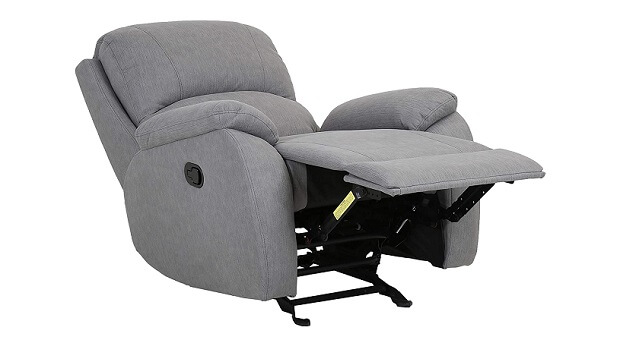
If your ferret ends up in there and you don’t know that, you might crush him simply by pulling the lever of the recliner. So, in my opinion, the best thing you can do with a recliner as a ferret owner is to get rid of it or put it in the forbidden room.
Sofa & Couch
I know that you can’t get rid of a sofa you have in your home and I don’t want you to do that. That is why I am offering you a few solutions for them right here. Most ferrets break in the sofa from the bottom, that is the only place with thin fabric (or no fabric at all). So, by ferret proofing your couch, you are actually preventing them from entering.
The easiest way to ferret-proof your couch or sofa is to remove the legs. With that, you are removing the possibility for them to enter the couch from the bottom, but it might result in a very low couch. If that is not what you want, there are a few other solutions.
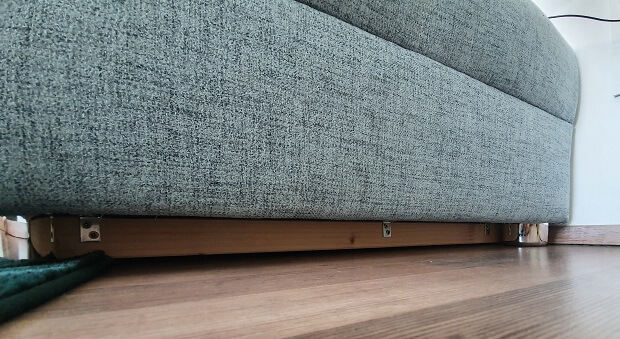
You can install a wooden or MDF board on the bottom of the couch. You have to put it on the entire bottom, but make sure you cover every inch of the surface. Or, you can put wooden boards right behind the legs of the couch. That way you are preventing your ferrets to go past the legs under the couch which means, again, they can’t go under.
Big Closets For Storage
The next ferret proofing item on our list is the storage closet. I want to focus on closets you use to store things like clothes, dishes, bedsheets, etc. If you have those types of closets at home, the best and easier way to ferret-proof them is to use child-safety locks and place them on each door.
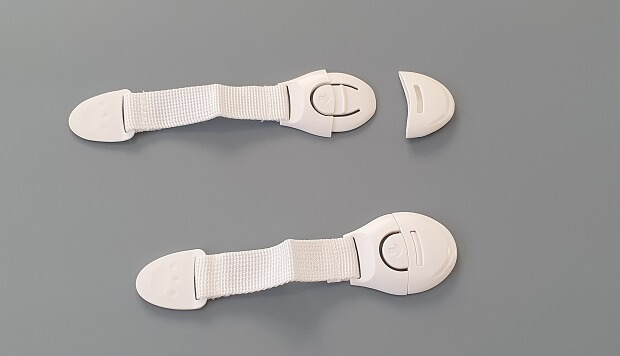
Use locks that aren’t that easy to open and you have to install them at the bottom of the doors. If you install them in the middle or higher, your ferret might open the doors just enough to enter and get locked inside.
Storage Cabinets
Storage cabinets are a vital part of many living rooms or bedrooms. In my opinion, the best thing you can do is to remove the legs and lift them of the ground. Also, the bottom of each storage cabinet should be a drawer because it is much harder for them to open a drawer than to open the door. If they do open the drawer, the side of the drawer is another height obstacle they have to conquer to get inside.
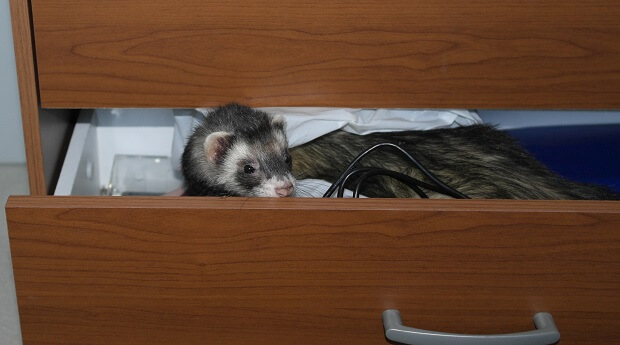
If you can’t lift the cabinet of the ground, there is another solution. Again, you can use child-safety locks and close the doors and drawers. Just make sure the locks are tight enough so the ferret can’t open them at all.
TV Stands
Another pretty dangerous piece of furniture is a TV stand. My first recommendation is to place the TV on the wall to avoid TV-related accidents. When you put a TV on the wall, you can focus on the stand, and again, I would strongly recommend lifting it off the ground at least 20 cm (around 8 inches).
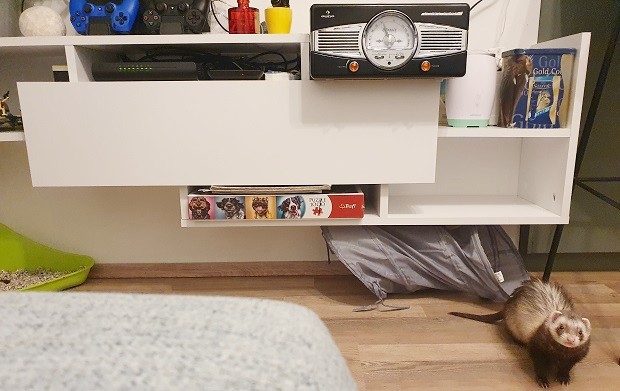
If that is not an option, then remove everything from the first two shelves in the cabinet so the ferret can’t climb through them on the rest. You will sacrifice two shelves to save the other 6 you have. I think it is a good bargain. That is why I have an empty shelf on my TV stand as you can see in the picture.
Bookshelves
Bookshelves are probably the most challenging piece of furniture to ferret proof because you can’t lift them and you can’t use child safety locks on them. So, what can you do with them? Just like with the TV stands, you can clean the first two shelves and reserve them for ferrets.

Most shelves are made in the same width and made of smooth material which makes it very hard for a ferret to climb from one shelf to the other without help. When you have books or boxes on the shelf, ferrets use them as stairs to climb up. If you remove the “stairs” it is not that simple anymore.
Also, make a room between a shelf and other furniture. It doesn’t make sense to clear out bottom shelves for your ferret to climb on it over your couch or table.
Kitchen Cabinets
Other pretty tricky ferret-proofing elements of your home are kitchen cabinets. The best way to ferret-proof them is to close the space under the cabinets with toe kick and most kitchen cabinets come with it.
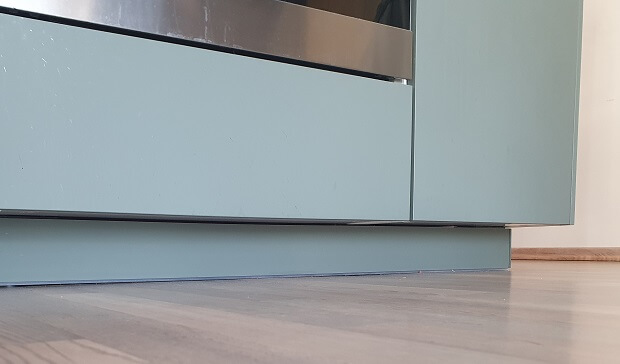
If you don’t have toe kicks, you can easily order them and install them yourself, just make sure you close all the gaps underneath the cabinets to prevent them from entering. If you close that part, you are 90% done with ferret proofing.
Dishwashers
There are two challenges when it comes to the dishwasher. The first problem is if you have a dishwasher installed in the kitchen cabinets. Due to the doors, there is a gap between the dishwasher door and kitchen toe kick. So, it is a good idea to close that gap with a wooden or plastic board so a ferret can’t get in.
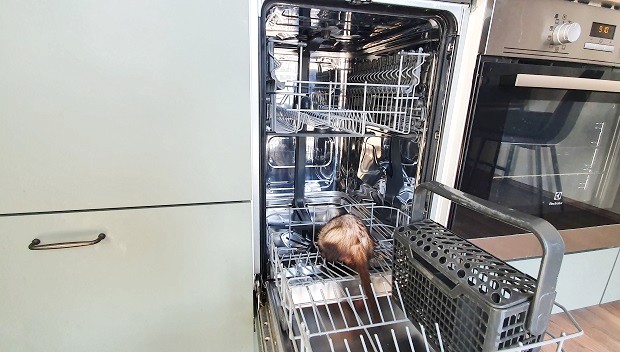
If you don’t have that option and your dishwasher is freestanding, then you don’t have to worry about that. But, you have to pay attention when you are cleaning the dishwasher. Ferrets are curious and they love to explore so you can be sure they will be inside the dishwasher the moment you open the door. So, make sure a ferret isn’t in the dishwasher when you close the doors.
Refridgerator
The most important thing you can do to ferret-proof kitchen appliances like a fridge is to prevent a ferret from entering the back. The most dangerous place on the refrigerator is the backside. If your ferret enters the back of the fridge, he can get hurt by a ton of wires, a fan, and many other electrical cords.
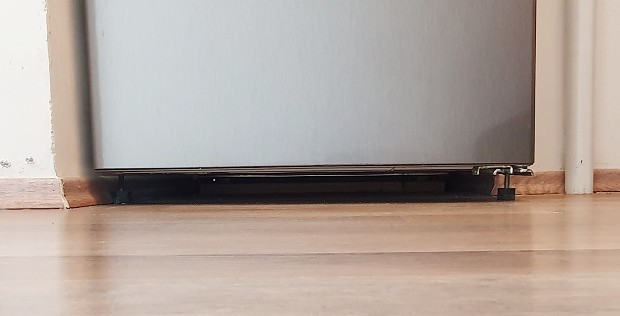
So, make sure the fridge is as close to the wall as possible, preferably at least an inch from the wall. If you have a freestanding fridge, make sure to secure the backside with boards or MDF.
Oven
The oven is very similar to the refrigerator when it comes to the safety of the ferret. But, the danger lies in the other location and that is underneath the oven. Your ferret could climb in the over from underneath and burn himself on the pilot light.
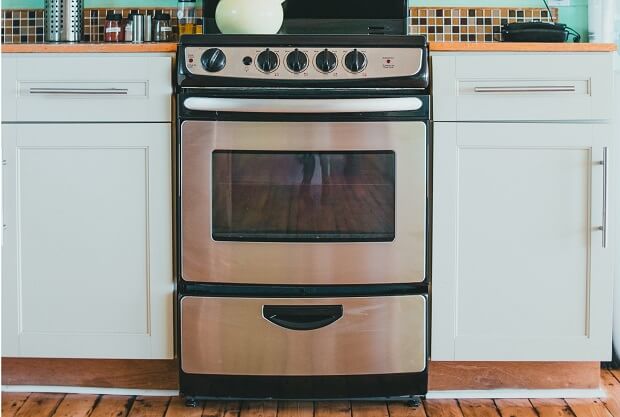
So, the best solution is to lower the oven as much as you can or install an obstacle around the legs to prevent your ferret from entering the oven from beneath it. The second option is similar to the ferret-proof solution with the couch.
How To Ferret Proof Household Items?
Now that we talked about ferret-proofing furniture, let’s talk about other items you have in your home and you can’t live without them.
Trash Can
The trash can is extremely interesting to every pet, including ferrets because it is a source of so many different smells. So, the best solution you can have is to buy a high and stable trash can with the lock. For example, the ones you can open with your foot. That way your ferret can’t reach it and if he manages to, he won’t be able to open it.

Also, don’t leave trash bags in your hallway if your ferret can get there. Pull the bags out of the trash can before you leave the house because a ferret can enter the trash bag and spread everything around the house.
Storage Boxes
It doesn’t matter whether it is a jewelry box, a box filled with old photos, or some other memory, keep it away from your ferret. Place it on the furniture your ferret can’t climb on and make sure it is completely closed. If there is a lock or a latch on the box, that can only be a plus.

Laundry Basket
You can’t really ferret-proof a laundry basket, but you can get a high model so your ferret can’t jump in. Also, it is a good idea to have a lid on it. If you want to stick to the laundry basket you have, then simply make sure to check if the ferret is inside before you start putting the laundry in the washing machine.

How To Ferret Proof Windows And Doors?
Windows and doors aren’t part of the furniture but you have to ferret proof them as well. It doesn’t matter if you live on the ground floor, basement, or 5th floor; windows and doors can be dangerous. Ferrets can escape and fall from the windows or doors. Both situations are equally terrifying so you have to prevent them from happening.
Doors
Make sure that the doors of your home, balcony, or hallway are tight shut. If there is a gap under the doors and your ferret notice it, he will try to go through it. You don’t have to buy new doors to minimize the gap, there are products that can help you with it.
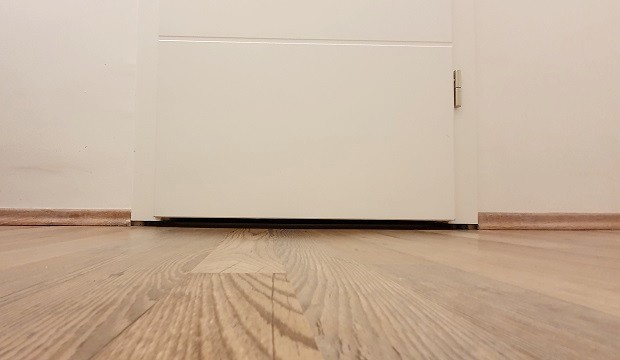
You can use simple door seals, just make sure you put the right one on the right doors. Place it on the inside of the doors, not the outside. Use a heavy-duty seal on the main entrance for the outside. If you live in an apartment, you can use the lighter version that doesn’t have to endure outside conditions.
Door Frame Obstacle
If you want to do something in a room your ferret isn’t allowed, place an obstacle on the door frame. It can be a wooden board at least 60 cm high (around 24 inches). That way you can move from one room to the other, but your ferret can’t. Keep in mind that this obstacle has to be away from furniture, boxes, or any other item that can your ferret use as a “stair” to jump over it.

I have seen that people put a transparent material like plexiglass in the middle of the board, but I wouldn’t recommend that. That way your ferret can see something is happening on the other side and he will do everything he can to climb over it. If you put a wooden board on the door frame he won’t be able to see what is happening. Your ferret will quickly get bored and move on.
Windows
Windows aren’t that easy to fix when it comes to ferret proofing. One thing you can do is to move it away from all furniture so your ferret can’t come near the window. The second thing you can do is to install a net on the window so you can open it and your ferret can come to the window but can’t escape from it.
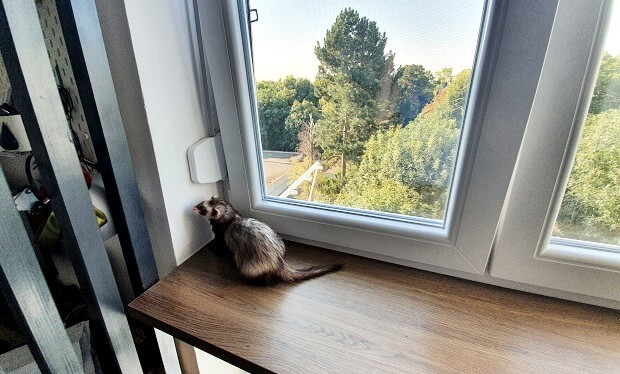
The best thing you can do is not to open windows when your ferret is running around the house. If you want to air out your home, find your ferret first and place him in the cage.
Forbidden Room For Ferrets
The only room I would recommend forbidding ferrets and almost every pet is the bathroom. You can see the danger in every bathroom corner and it is hard to ferret proof every inch of it. For example, there is the toilet, the washing machine, the cabinet filled with cleaning supplies, a cabinet filled with sponges and other bathroom items, shampoos, body lotions, nail polishes, nail polish remover, etc.
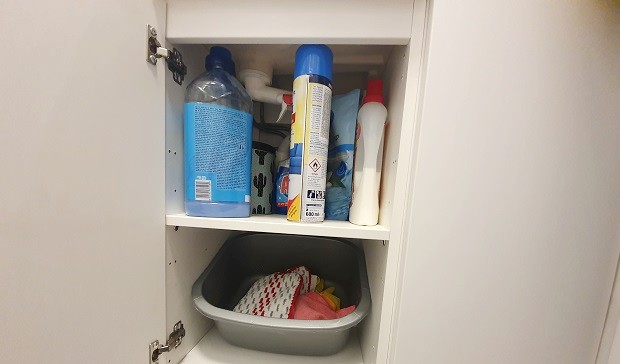
The best thing you can do in this room is to keep the doors closed at all times. But, just to be sure put a child-safety lock on the cleaning supplies cabinet, that is probably the most dangerous place in the bathroom.
What Else Can You Do?
Check The Furniture
Regularly check the furniture for holes, especially on sofas where your ferret can steal some sponge. Make sure the furniture is in top shape without holes and make sure there aren’t any pieces lying around for your ferret to steal or chew.
Use Ferret Cage
No matter how good you ferret proof your house if you have to leave your home, place a ferret in the cage. Firstly, you will be relaxed knowing he is sleeping in the cage. Secondly, you won’t have to think did you leave that drawer open or if the chair is far enough from the kitchen counter. That is when our paranoia usually kicks in and you can scratch it from your mind by placing your ferret in the cage where he is safe. If you aren’t sure which cage to use, read my post about the best ferret cages.
Check Ferret Toys
Check every toy your ferret has for the same reasons. Make sure the sponge is in place, there aren’t any holes in toys, the plushies have all their eyes and noses. This is the best way to be sure the ferret hasn’t swallowed anything that can harm him. Also, check out my post about ferret toys so you know which ones are safe and which ones aren’t
FAQ
Can Ferrets Chew Through Wood?
No, ferrets can’t chew through wood, but they can destroy it if they are stubborn enough. They can dig through the wood, use their teeth to grab and break the wood, and then they can swallow small particles but they can’t only chew to go through the wood.
Do Ferrets Chew Cables?
Ferrets aren’t rodents and most ferrets aren’t interested in cables. They won’t chew them unless they are very bored and they have absolutely nothing else to do. Nevertheless, if you have exposed wires around the house, fix that for your sake, not just ferret’s.
Do Ferrets Destroy Furniture?
If you close gaps on your furniture, then a ferret won’t destroy it. Also, if you keep your ferret entertained, the only thing he will do on the furniture is sleeping.
Can Ferrets Roam Around The House?
Yes, ferrets can roam around the house, but not if you don’t ferret proof it. Don’t leave your ferret alone, keep an eye on him at all times. First ferret-proof your home, then let your ferret roam around.
Conclusion
Yes, ferret proofing sounds like a lot of work, but I think it is worth it once you are done. The fact that you can sit down and relax while your ferrets go crazy all over the living room is far better than keeping an eye on them at all times. Once you get to know your ferret, you will know what he is interested in and not. That can help you adjust the ferret proofing process even more to your ferret and his abilities.


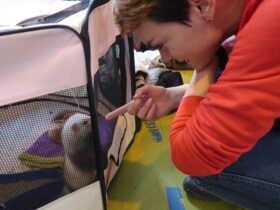










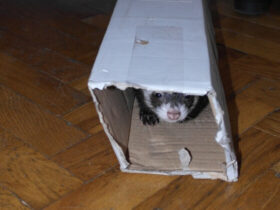



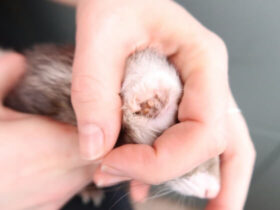


Leave a Reply